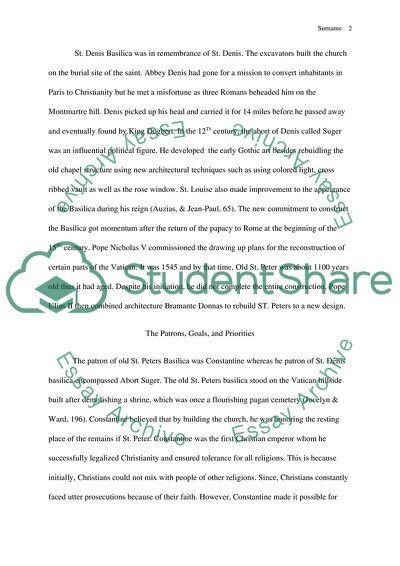Cite this document
(How did the Conditions of Patronage Affect these Structures Literature review Example | Topics and Well Written Essays - 1500 words, n.d.)
How did the Conditions of Patronage Affect these Structures Literature review Example | Topics and Well Written Essays - 1500 words. https://studentshare.org/history/1830427-st-denis-basilica-and-old-st-peters-basilica
How did the Conditions of Patronage Affect these Structures Literature review Example | Topics and Well Written Essays - 1500 words. https://studentshare.org/history/1830427-st-denis-basilica-and-old-st-peters-basilica
(How Did the Conditions of Patronage Affect These Structures Literature Review Example | Topics and Well Written Essays - 1500 Words)
How Did the Conditions of Patronage Affect These Structures Literature Review Example | Topics and Well Written Essays - 1500 Words. https://studentshare.org/history/1830427-st-denis-basilica-and-old-st-peters-basilica.
How Did the Conditions of Patronage Affect These Structures Literature Review Example | Topics and Well Written Essays - 1500 Words. https://studentshare.org/history/1830427-st-denis-basilica-and-old-st-peters-basilica.
“How Did the Conditions of Patronage Affect These Structures Literature Review Example | Topics and Well Written Essays - 1500 Words”. https://studentshare.org/history/1830427-st-denis-basilica-and-old-st-peters-basilica.


